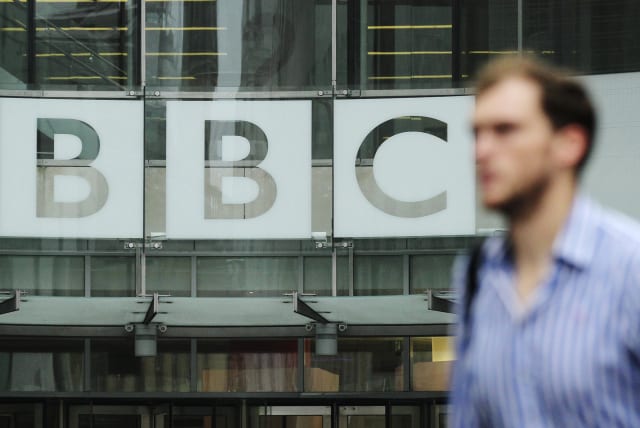BBC breaches its own editorial guidelines 1,500 times over Israel-Hamas War - report

The total number of BBC editorial breaches, including impartiality, accuracy, editorial values, and public interest, was 1,553.
The BBC has breached its editorial guidelines for news coverage more than 1,500 times since the beginning of the Israel-Hamas war, according to The Telegraph’s Saturday report based on research led by British lawyer Trevor Asserson.
The research analyzed four months of the BBC’s output across television, radio, online news, podcasts, and social media. Additionally, a team of around 20 lawyers and 20 data scientists contributed to the research and analyzed nine million words of BBC output using artificial intelligence (AI), The Telegraph added.
The research found that there was a “deeply worrying pattern of bias against Israel” and that Israel was associated with genocide 14 times more than the Hamas terror group was throughout the analyzed BBC coverage.
The total number of BBC editorial breaches, including impartiality, accuracy, editorial values, and public interest, was 1,553.
Further findings from the research included the BBC’s repeated downplaying of Hamas terrorism. Conversely, Israel was presented as a “militaristic and aggressive nation” by the BBC, the report said.
The report also added that there were BBC journalists who have shown sympathy for Hamas, with some celebrating its acts of terror in the past.
Journalists who support terrorism?
The most problematic of the BBC’s channels was found to be BBC Arabic, with the report showing that it was one of the most biased of all the global media outlets concerning the Israel-Hamas war.
Eleven cases were brought to light in which the BBC Arabic’s coverage of the war featured reporters who made public statements in support of terrorism, specifically supporting Hamas. The report added that the channel’s viewers were unaware of this information.
After the October 7 Hamas attacks on Israel, the BBC said it would describe Hamas as a terrorist organization where possible, The Telegraph noted.
However, the research showed that Hamas was recognized as a terrorist organization just 409 out of 12,459 times, totaling 3.2%, over the four-month period.
BBC responds
The BBC responded to Asserson’s report by saying it would “carefully consider it,” The Telegraph added. One of the corporation’s spokesmen noted that there were serious questions about the report’s methodology, emphasizing that it used AI in its analysis.
“We don’t think coverage can be assessed solely by counting particular words divorced from context,” the spokesman said.
Laurence Julius, vice-chairman of the National Jewish Assembly, said there should be an independent review of BBC’s Israel coverage: “The BBC as the world’s most influential media company with a global audience of over 500 million, including influential thought leaders, has a duty to report news accurately without bias or distortion and to explain the context. The BBC has failed abjectly and this is nurturing an anti-Israel and antisemitic narrative across its network. It has to change.”
The research has reportedly been submitted to the BBC’s director general, chairman, and all of its board members.
Trevor Asserson, a British-born lawyer based in Israel, has been monitoring the BBC’s coverage of Israel for two decades since the Second Intifada.
“The BBC’s responsibility as a public service broadcaster is to deliver news without bias,” Asserson said.
“Our analysis reveals a significant deviation from this standard, especially in its reporting on the Israel-Hamas conflict, where the broadcaster showed a clear partiality towards one side. This bias was even more pronounced in the BBC’s Arabic content.
“Such conduct not only breaches the BBC’s Royal Charter but also calls into question its suitability for continued public funding.”
Jerusalem Post Store
`; document.getElementById("linkPremium").innerHTML = cont; var divWithLink = document.getElementById("premium-link"); if (divWithLink !== null && divWithLink !== 'undefined') { divWithLink.style.border = "solid 1px #cb0f3e"; divWithLink.style.textAlign = "center"; divWithLink.style.marginBottom = "15px"; divWithLink.style.marginTop = "15px"; divWithLink.style.width = "100%"; divWithLink.style.backgroundColor = "#122952"; divWithLink.style.color = "#ffffff"; divWithLink.style.lineHeight = "1.5"; } } (function (v, i) { });

